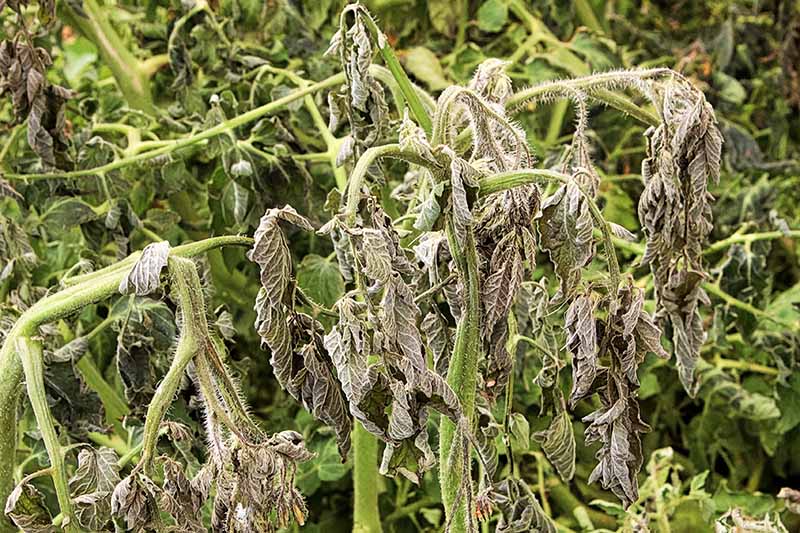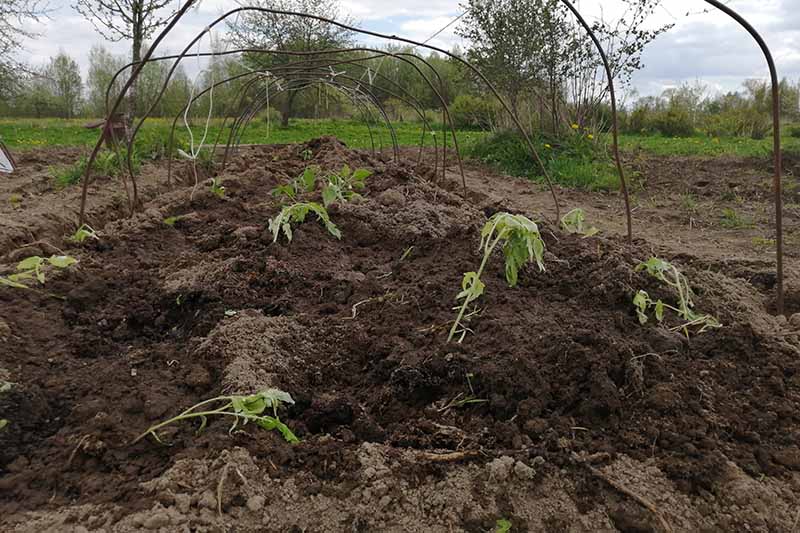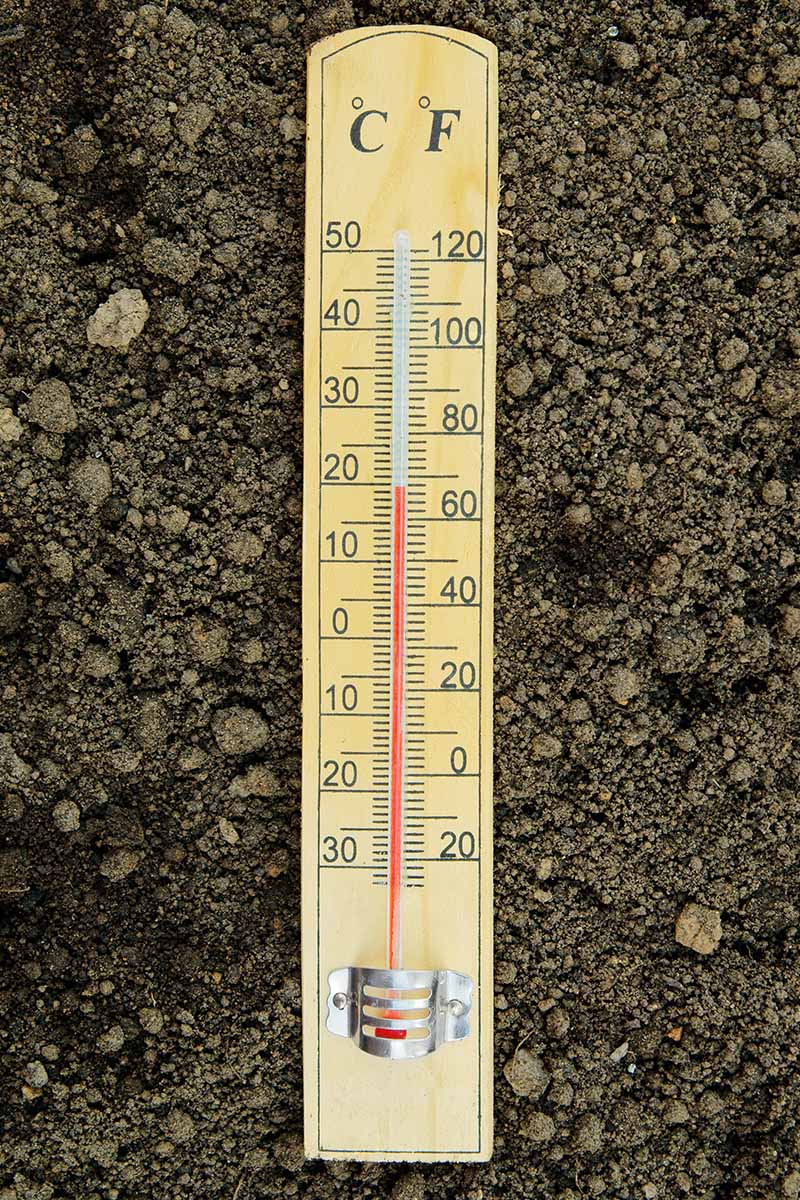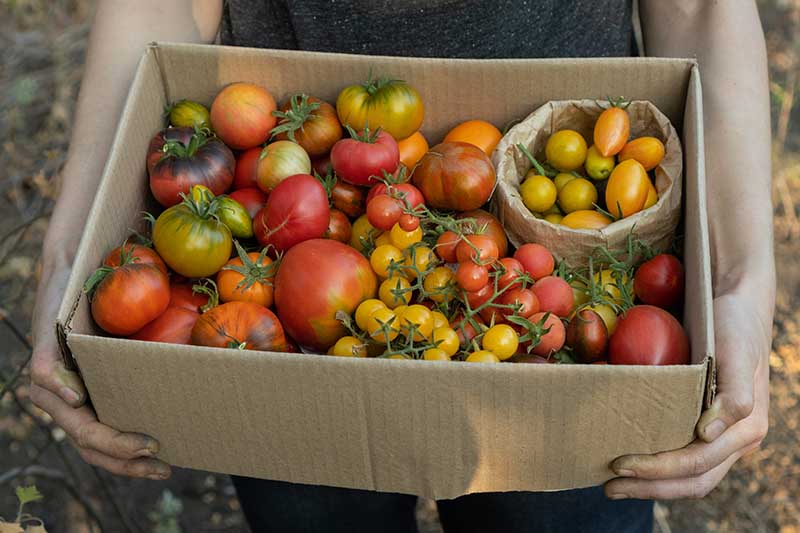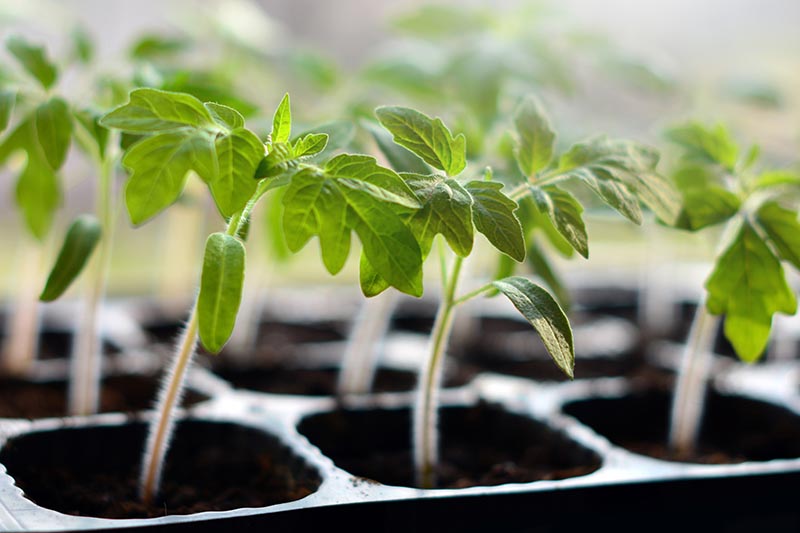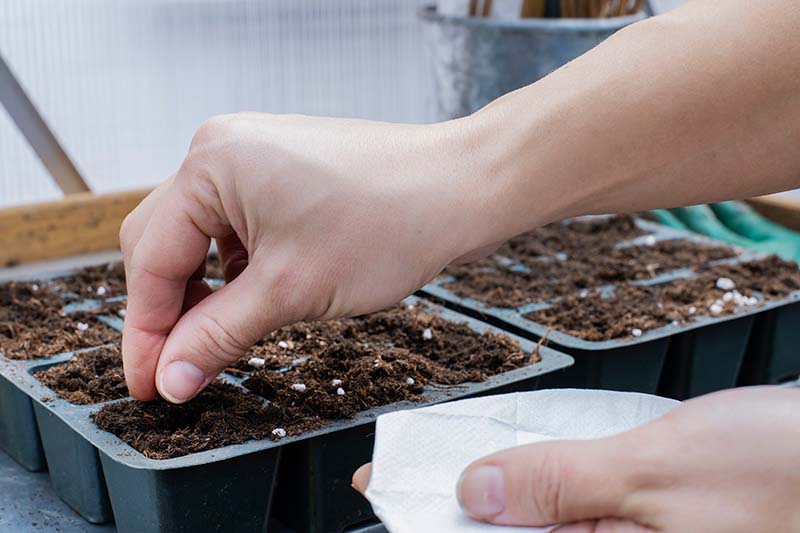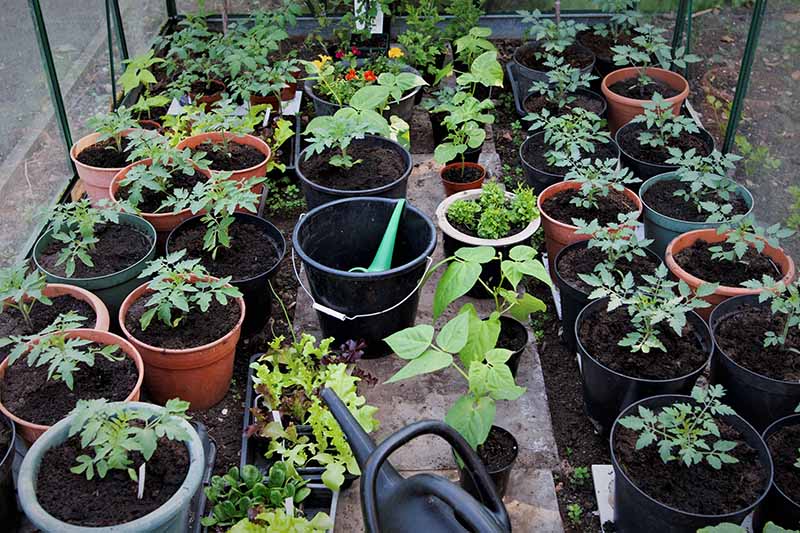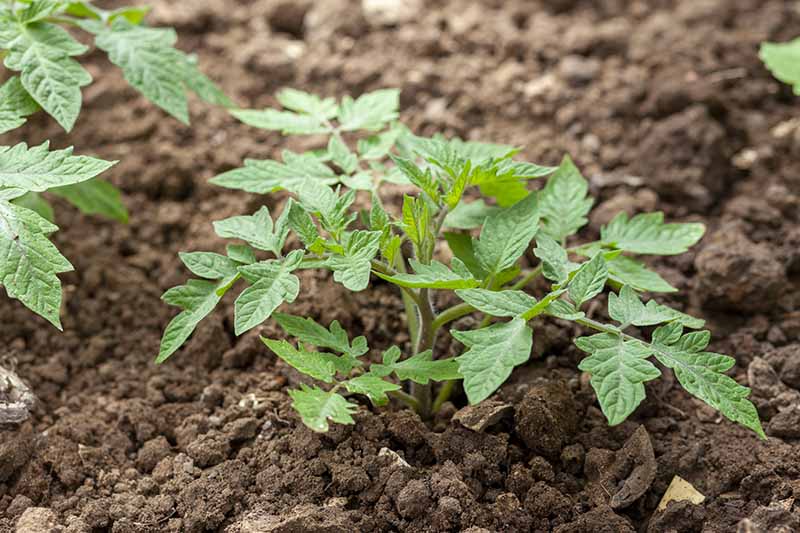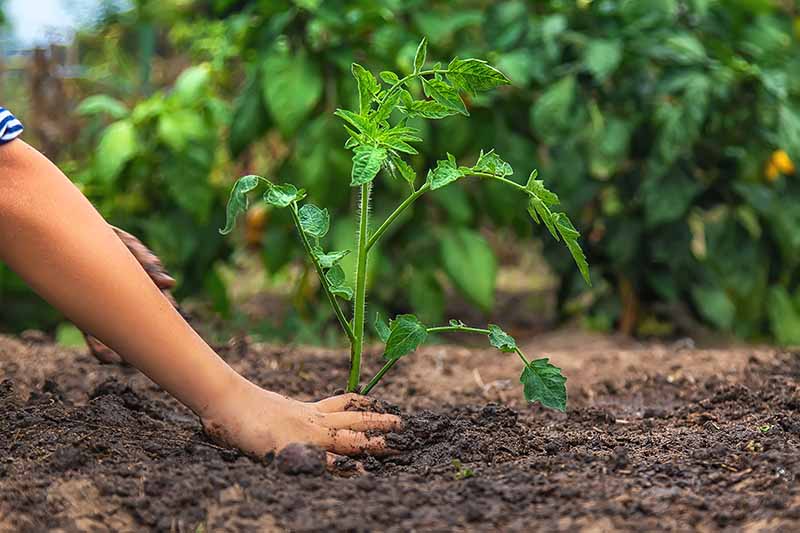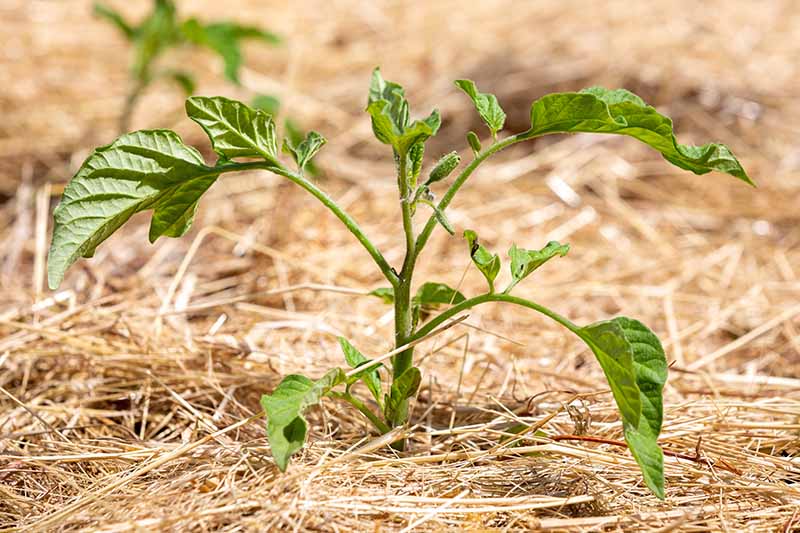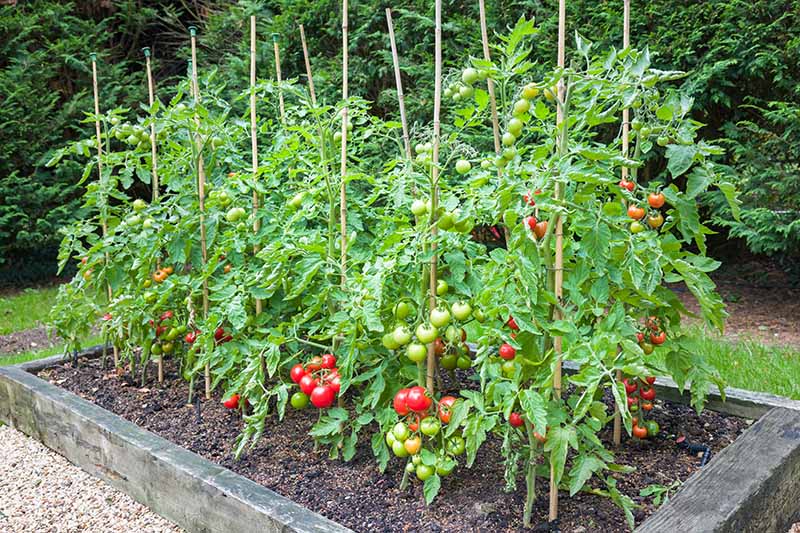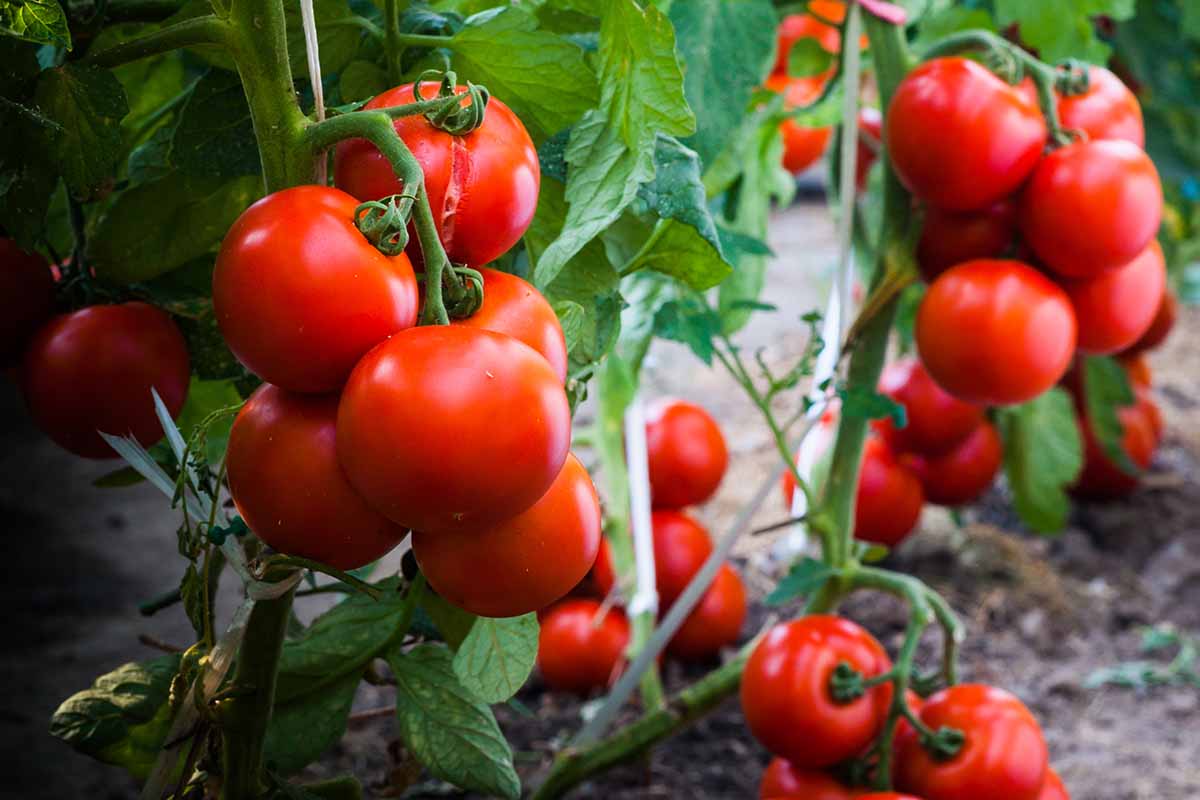If you wait too long to plant them you may not have enough time in the season to harvest a full crop. But on the other hand, if you start them too early you might risk stunting or even killing the plants. We link to vendors to help you find relevant products. If you buy from one of our links, we may earn a commission. Read on to learn how to calculate the best time for planting tomatoes in your climate. This article will help you figure out how early to start seeds indoors as well as when and how to transplant seedlings to the garden. Growing tomatoes is an investment. Whether you are spending good money on nursery stock or putting in the time and energy it takes to grow them from seed, you certainly don’t want to risk ruining your crop by planting too early or too late. If you really want a stellar harvest of juicy, sweet fruits, it is important to get the timing right. To figure out the best time to start tomato seeds and plants, it is helpful to first figure out when you plan to plant them outside in the garden and work backwards.
Calculate Your Optimal Planting Date
First and foremost, you absolutely need to wait until after the last expected frost date according to your USDA Hardiness Zone. I know from unfortunate experience that this can be hard to do. But even if you have an unseasonably warm stretch of weather in the spring, do not be tempted to plant early! Tomatoes are true warm-weather crops. If you plant them too soon, you risk killing them. Even if early transplants survive a few unexpected frosty nights, their growth may be stunted and struggling plants will be more susceptible to pests and disease. So if you pay attention to nothing else, be sure to check the expected last frost date for your growing zone and wait until after that date to plant. If you are unsure of your growing zone, you can use this tool from the USDA to determine your hardiness zone and climate based on your zip code. When you’re looking at first and last frost dates, keep in mind that these dates are just ranges based on the average for your growing zone. Since we all live in unique microclimates, it is always a good idea to keep a yearly garden journal with your own data on frost dates. While this is an important starting point, if you really want to pinpoint the perfect starting time, there are several additional important factors to consider.
Temperature
For tomatoes to grow well, nighttime temperatures should be consistently above 50°F. Additionally, it is best to wait to plant until soil temperatures are around 60°F. If you don’t have a soil thermometer, a makeshift method is to stick your finger a couple of inches into the soil. If you are unable to keep it there comfortably for a minute, the soil is likely still too cold. You can spread a layer of thick mulch or black plastic out in the garden to help the soil warm faster in the spring.
Sunshine
In addition to warm temperatures, these plants need adequate sunshine to be happy. Before planting them, make sure the sun is high enough in the sky for enough of the day for the site to receive at least six hours of full sun exposure. The only exception to this is for gardeners in very hot climates, where some shade – particularly in the afternoon – can be helpful to protect plants on scorching days.
Days to Maturity
So this is where things can get a tad more complicated. While it is true it may be safe enough to plant immediately after the last frost, waiting a few extra weeks until the temperatures have warmed and the days are longer may result in healthier, happier plants. Some varieties take a long time to mature, though, and it is equally important to make sure there are enough warm days for plants to produce fruit before they are harmed by fall frosts. Looking at the number of “days to maturity” on the back of your seed packets will help you to determine the ideal planting window for your growing zone. First, figure out when the first frost of fall is expected for your region. Count backwards from this date, using the number of days to maturity listed on the seed packet or plant tag. You can safely plant tomatoes in the garden between the last frost of spring and this date. For instance, I live in USDA Hardiness Zone 4b with an average first frost date of September 25th and last frost around May 21st. Let’s say I have a packet of seeds that says “90 days to maturity.” Counting backwards from September 25th by 90 days, I would need to plant seedlings out in the garden after May 21st but before June 27th. The safest bet would be to find a date in that window with some wiggle room on either side, such as the first weekend in June. There is a wide range of growing times for tomatoes and many varieties to choose from. Some cultivars mature in 50 days while others can take up to 100 days to harvest. You can use this information to select cultivars based on a number of days to maturity that will work well with your growing zone. If you live in a cold climate or get a late start on your garden, choose a variety with a shorter number of days to maturity. Now that you know when to plant tomatoes in the garden, you can use this information to determine when to start seeds indoors.
When to Start Seeds Indoors
There is some debate on how early to start tomato seeds indoors. It is typically recommended to start them six to eight weeks before transplanting outside. Many gardeners, however, choose to start even earlier, up to 12 weeks before the expected transplant date, to give their seedlings extra time to grow before planting them out. While this may give you a head start on the season, starting too early can also mean you risk stressing and stunting young plants. Often, the smallest seedlings I plant out in the garden are the ones that grow the largest and strongest. How early to start may vary depending on the climate of your indoor growing space as well as the selected cultivar. If you have a warm, humid space with lots of light, seedlings are likely to germinate faster and six weeks may be enough. Ideal temperatures for starting tomatoes are between 65 and 85°F. In this temperature range, seeds should germinate in a week or so. If you don’t have a warm, bright space to start your seeds, or if you have a really short growing season, starting even earlier can be advantageous. Start seeds in two- to four-inch pots in a lightweight seed starting mix, covering the seeds with a quarter-inch of soil. Mist and keep the soil moist until sprouts appear. Set your containers in a warm location or on a heat mat, covered with a humidity dome if you have one to speed germination. Once the seeds have germinated, remove the lid and place your pots in a sunny window or under grow lights for 10 to 14 hours a day. Using artificial grow lights is especially helpful if you choose to start seeds on the early side when days are still short. Keep the soil moist but not soggy. The best method for watering tomato seedlings is bottom watering. Set the pots in a tray and add half an inch of water to the bottom every few days when the soil feels dry. Let the roots soak up the water for 10 minutes or so, then dump out any excess water from the tray. Once they have developed a few sets of true leaves, transplant to four- to six-inch containers. Whenever you transplant tomatoes, you want to sink them low enough in the pot that you bury the lower third of the stem in soil. This will encourage them to grow more roots, resulting in stronger, more robust plants. If you started seeds early, you may need to repot a second time in even larger pots before they are ready to be planted out. It is important not to let them become rootbound. Harden off the seedlings once soil temperatures have reached about 50°F outdoors. Set the pots in a sheltered location outside for an hour or so, increasing the length of time each day over the course of a week or two until your plants have adjusted to the outdoor conditions.
Planting in the Garden
When at last it is time to plant tomatoes in the garden, find a spot with well-draining soil that receives full sun, or in hot climates, just a little bit of afternoon shade. Prepare the garden bed by working a few inches of compost into the soil. Dig deep holes 18 to 36 inches apart, burying the bottom two-thirds of each plant so only the topmost leaves are above the soil. Refill the holes, lightly tamping the soil around each one as you do so. Water thoroughly and add a few inches of hay or straw mulch around the base of each plant, leaving a few inches bare around the stem. Depending on variety, you may also need to add cages or stakes as they grow to keep them upright. Doing this when you plant is an excellent option, to avoid damaging the roots after they have become more established. You can learn more about growing and caring for tomatoes in our complete guide.
Planting Tips for Abundant Harvests
Since tomatoes really need a few months of summer heat and sunshine for good yields, if you live in a warm climate with a long growing season, it doesn’t hurt to wait a few extra weeks after the last frost before planting them out. If you have the time and materials, you can start seeds indoors under grow lights as early as 12 weeks before moving them to their permanent location outside, transplanting to larger pots as they grow. If growing in colder zones, look for varieties with a shorter number of days to maturity. A layer of black plastic or thick mulch can help the soil to warm up faster. While it is still important to wait until after the last frost, warmer soil will certainly help newly planted tomato seedlings to adapt and grow faster. Though it takes a bit of research and observation to figure out what is best for your garden, once you do, you may find yourself with more healthy and fruitful tomato plants than you know what to do with! What are your tips for starting tomatoes from seed or transplants? Share your experience in the comments below. Want to become a tomato gardening expert? Check out these articles next for more useful information:
How to Store Your Tomato HarvestHow to Grow Tomatoes in ContainersHow to Make Tomatoes Turn Red When They Refuse to Ripen on the Vine

